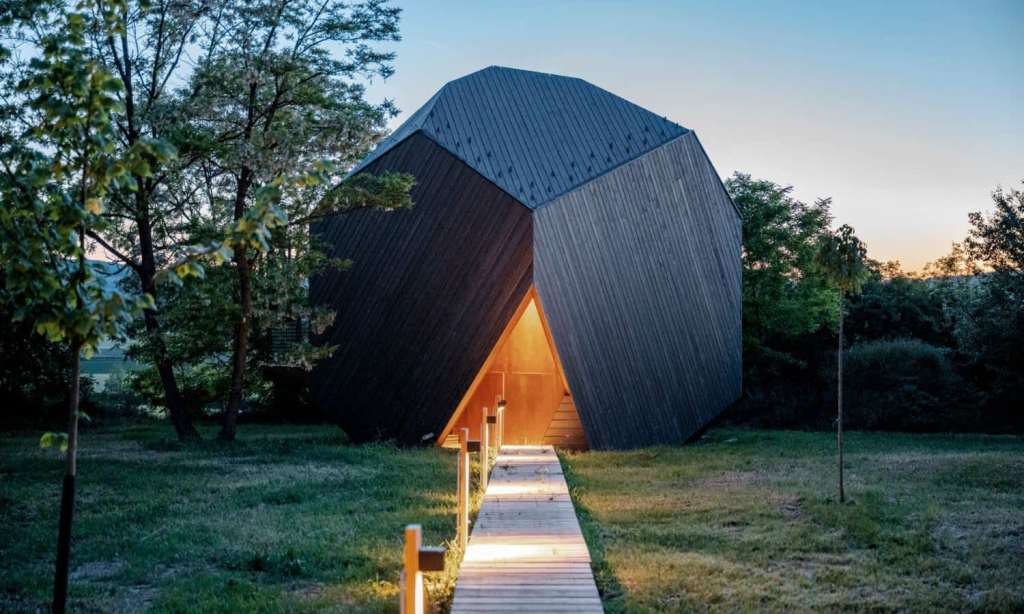By now, you’ve probably seen inside a tiny house. If not in real life than at least on the Internet. They’re being built in mass and are sprouting up all over the world. But while most follow the same interior design — loft-style sleeping with a kitchenette, lounge area and bathroom below — others are branching out with unique designs and features.
Case in point: six new cabins, dubbed ‘Rocks’, recently unveiled in the Hungarian countryside. Designed by Hello Wood Studio, the monolithic cabins look like soccer balls kicked onto a field — and then perfectly placed to sit an equal distance from each other and face outward, so as to allow for privacy. Its designers say it resembles a polished stone.
To create the polygonal shape of the cabins, its designers had to come up with innovative ways to make sure all irregular sides fit together and that all structural elements stayed hidden under the cabin’s roof and walls — all without being interrupted by windows or staircases. Most of the cabins’ elements were built and assembled off-site, and then brought in and positioned together, some with the help of a crane.
Related: Soak in Kangaroo Island’s Rugged Surrounds From These Stunning New Eco-Pods
Related: Inside a New Luxury Tiny Home on a Secret Cliffside Spot in South Australia
Each cabin sleeps two, and comes with a kitchen and dining table, bed and built-in wardrobe, and a bathroom. To give it a spa feel, it’s also equipped with an infrared sauna and, on the terrace, a hot tub, which can be enjoyed looking out onto the surrounding field and rolling hills.
Helpfully, and in line with the sustainable ethos most tiny homes are built with, the cabins can also be heated and cooled with minimal energy consumption.
The six cabins, along with a reception, were placed in the grove of Csóromfölde, an area once home to summer camps and festivals, also run by Hello Wood.
“Over the years, we have grown very fond of the area where we had held our camps,” says András Huszár, co-founder and CEO of Hello Wood. “It was clear, though, that once the summer festivals were over, Csóromfölde and the surrounding villages were abandoned for most of the year. From now on, we are going to be able to provide work for locals not only at the construction site but, through the operative tasks, throughout the whole year.”
The studio had bought the land for the summer camps and festivals as part of its development programme to revitalise the area. Though it has respected the tranquillity and natural environment of the surrounding villages, its aim is to revive a region that only comes to life from time to time, even in the summer season. With the opening of these stunning cabins, they’re well on their way.
Read more stories from The Latch and subscribe to our email newsletter.

